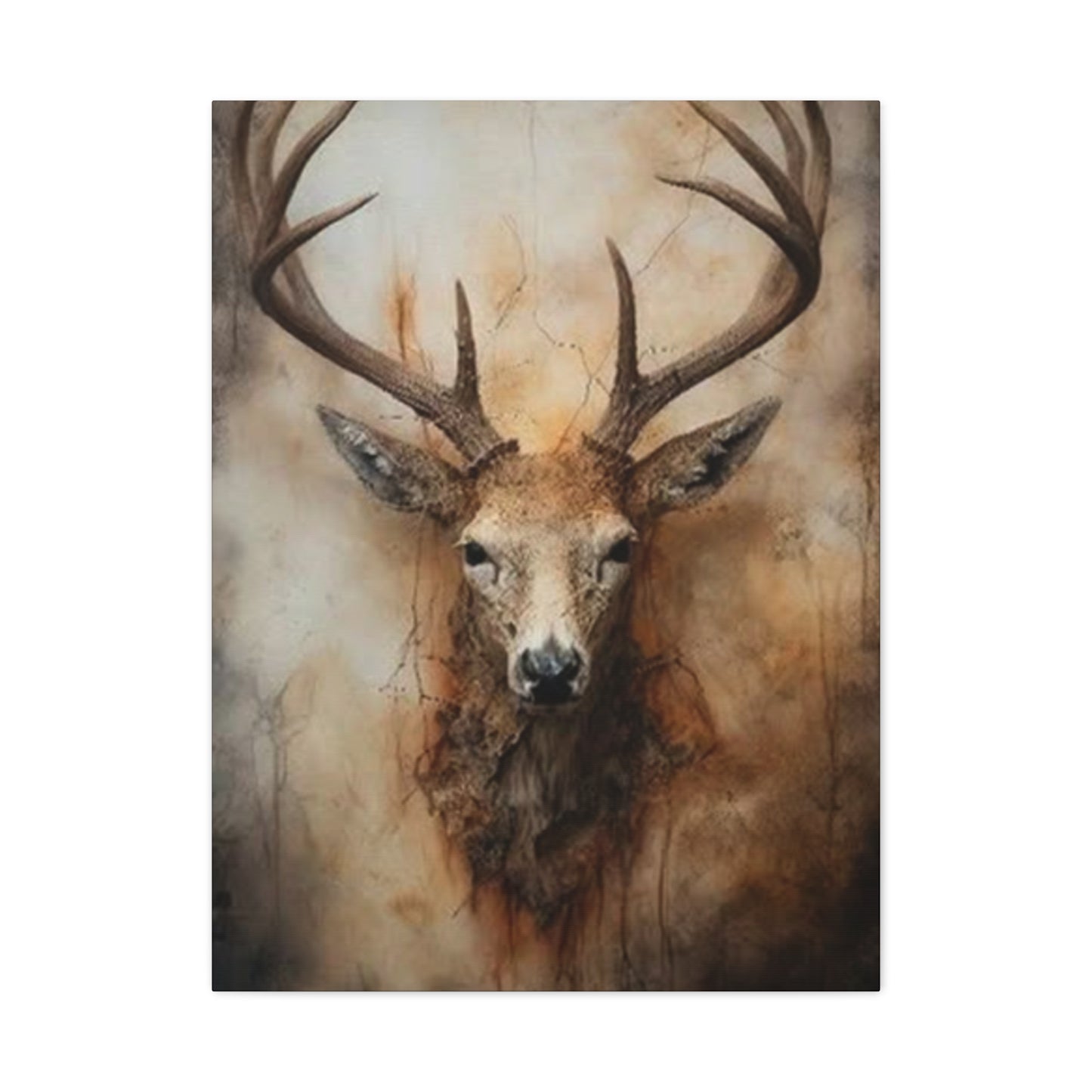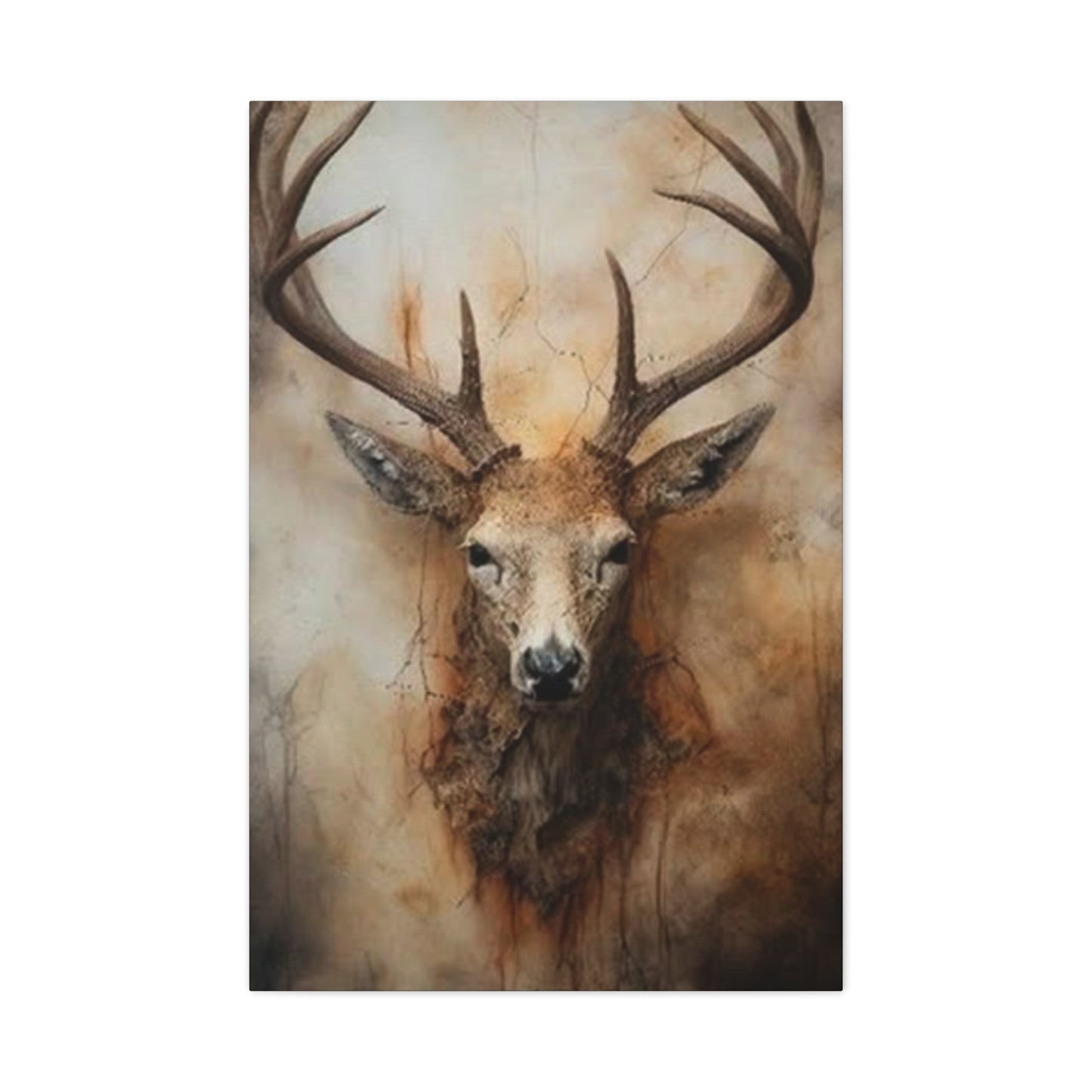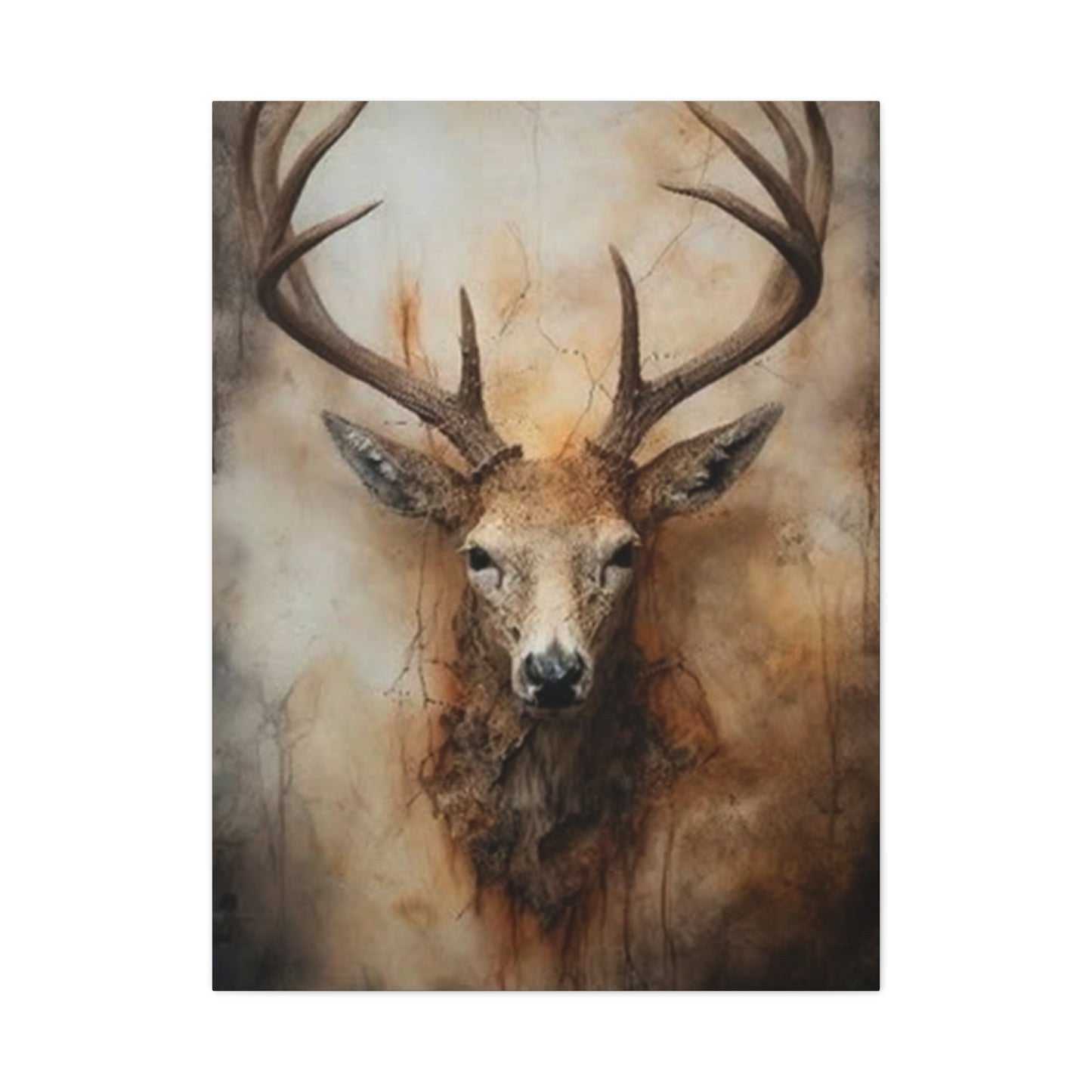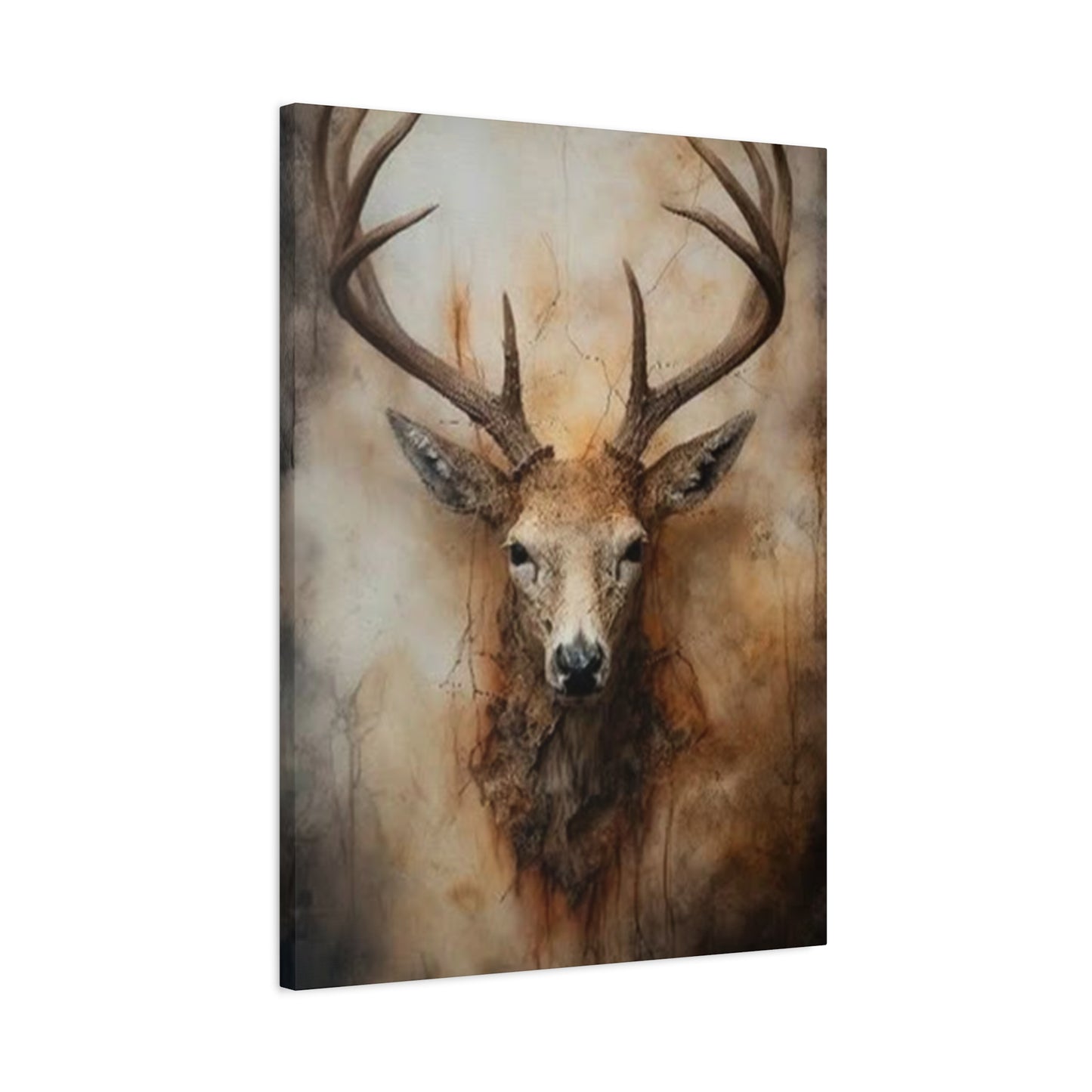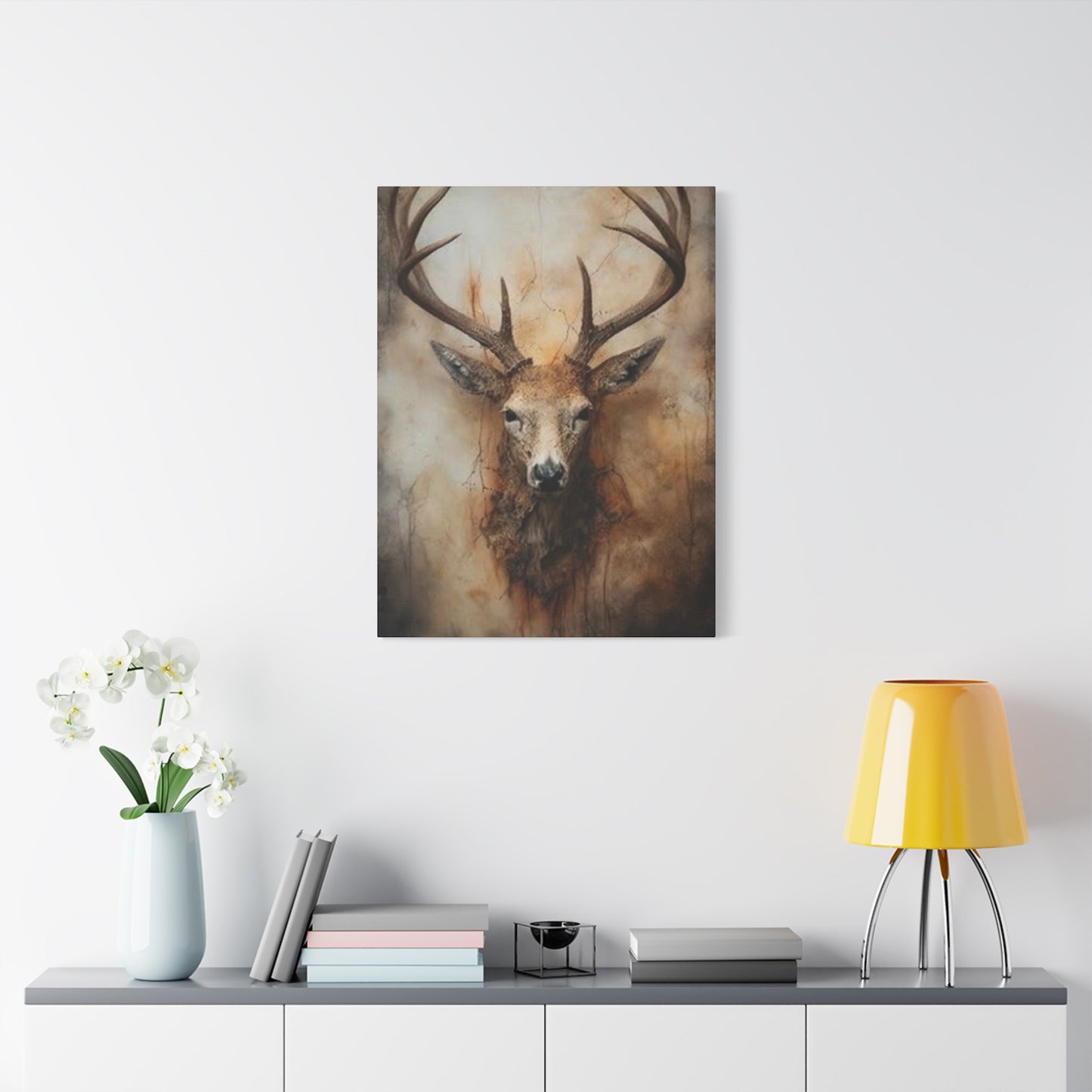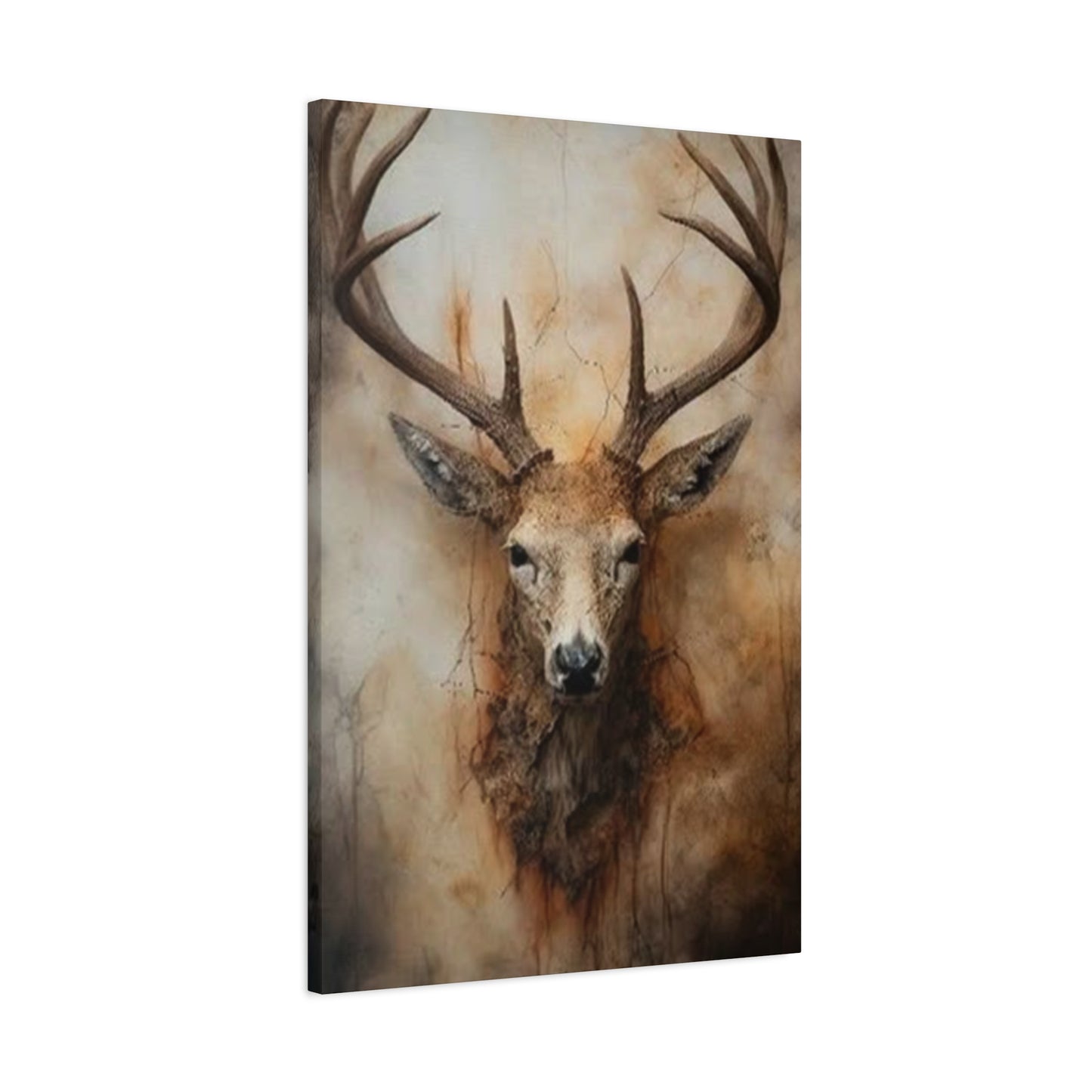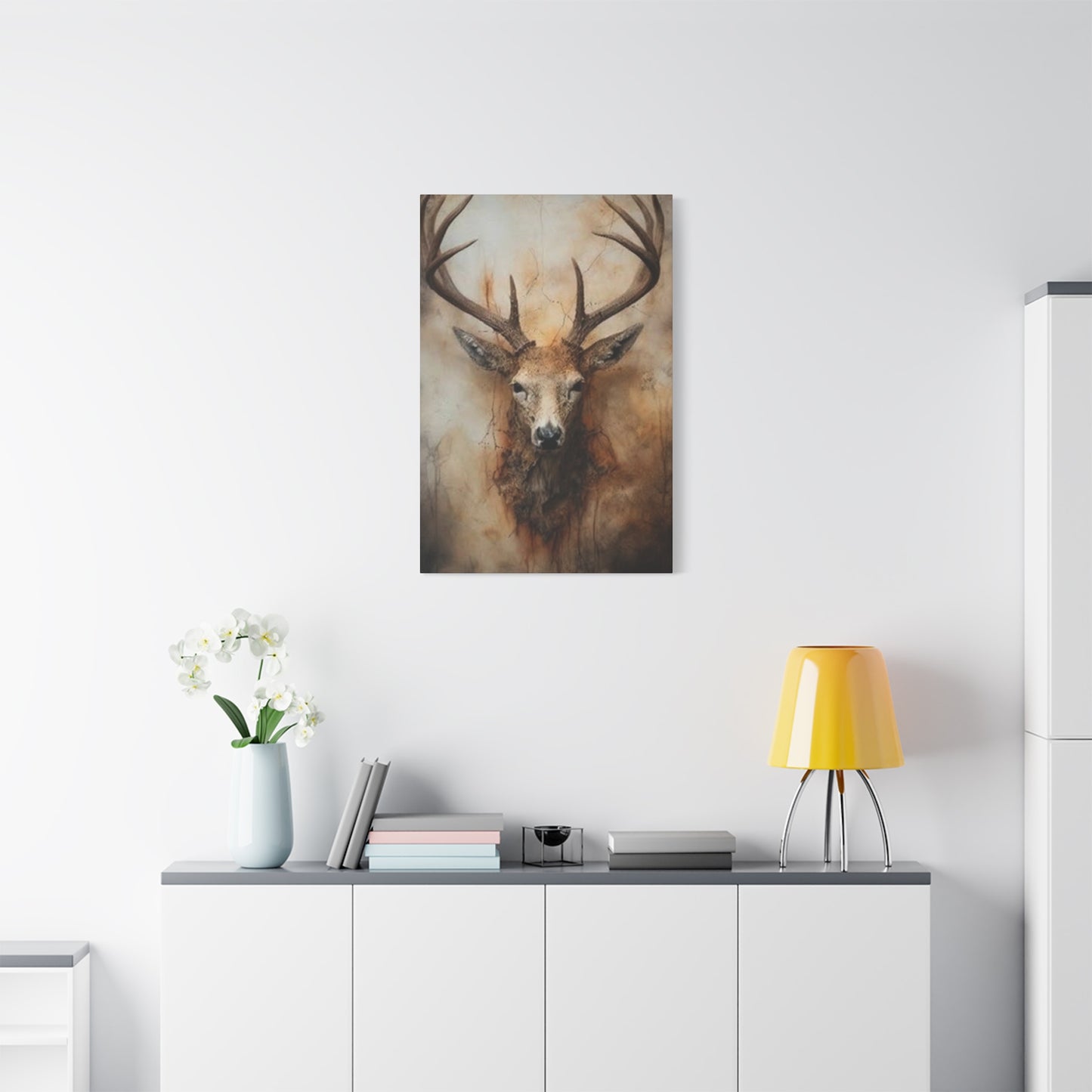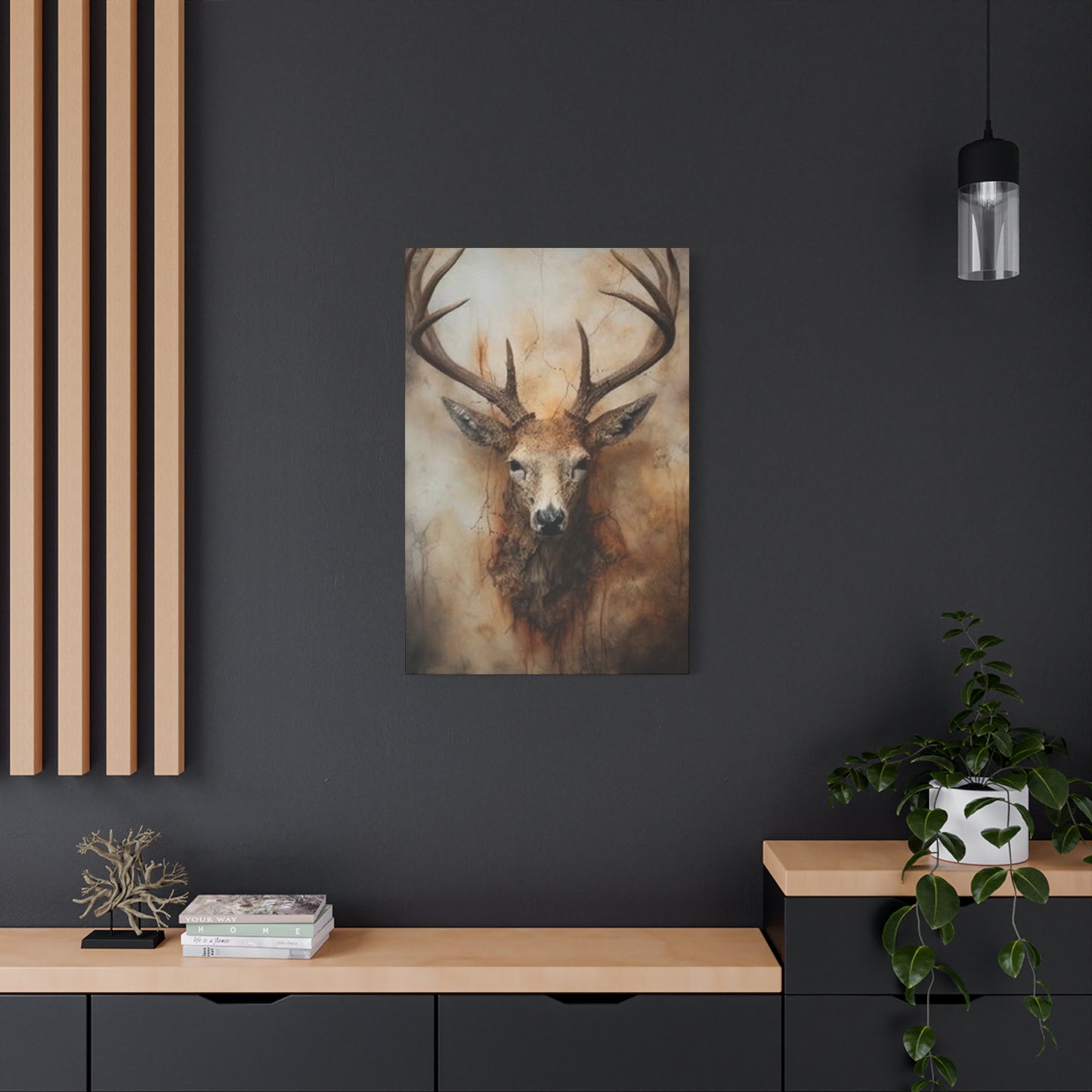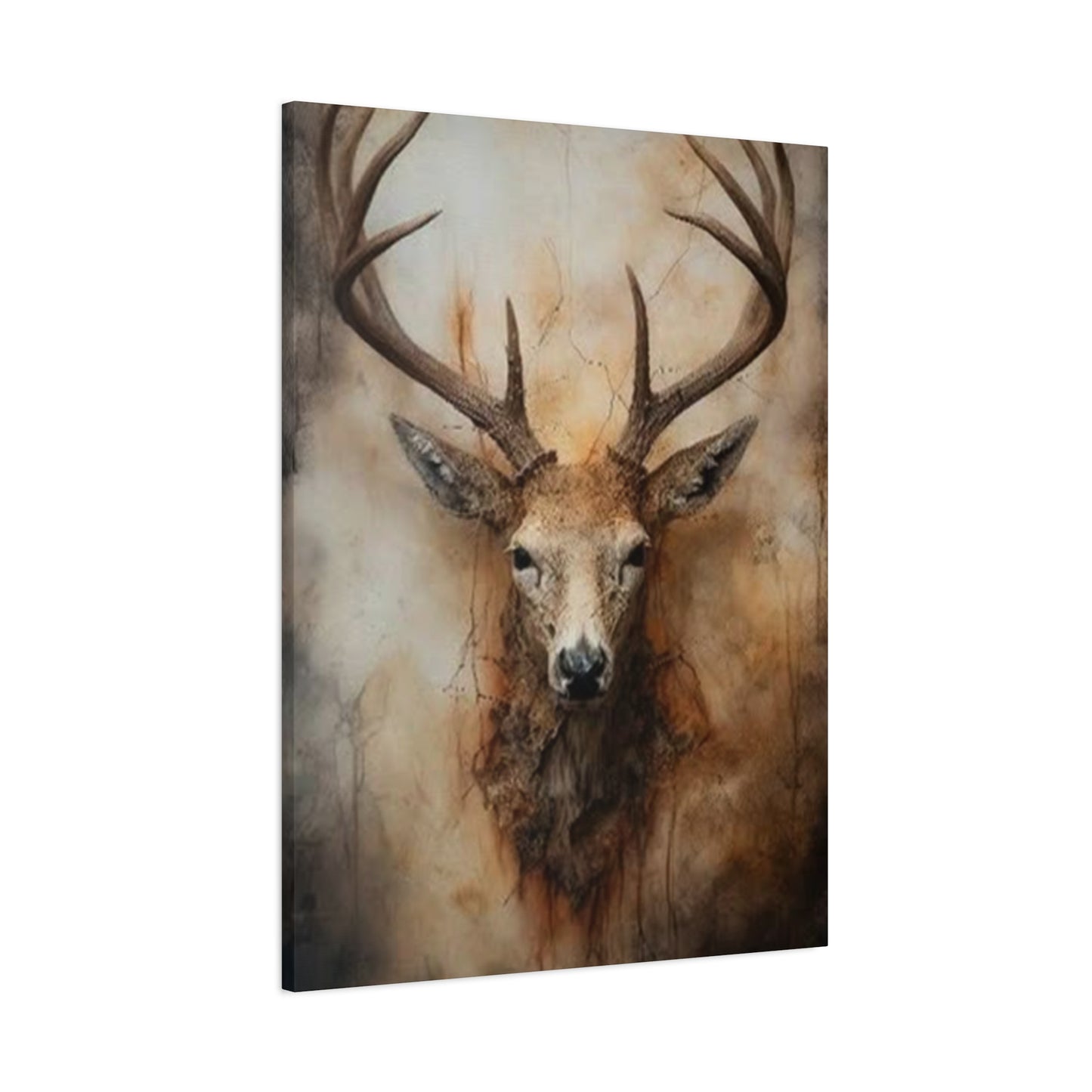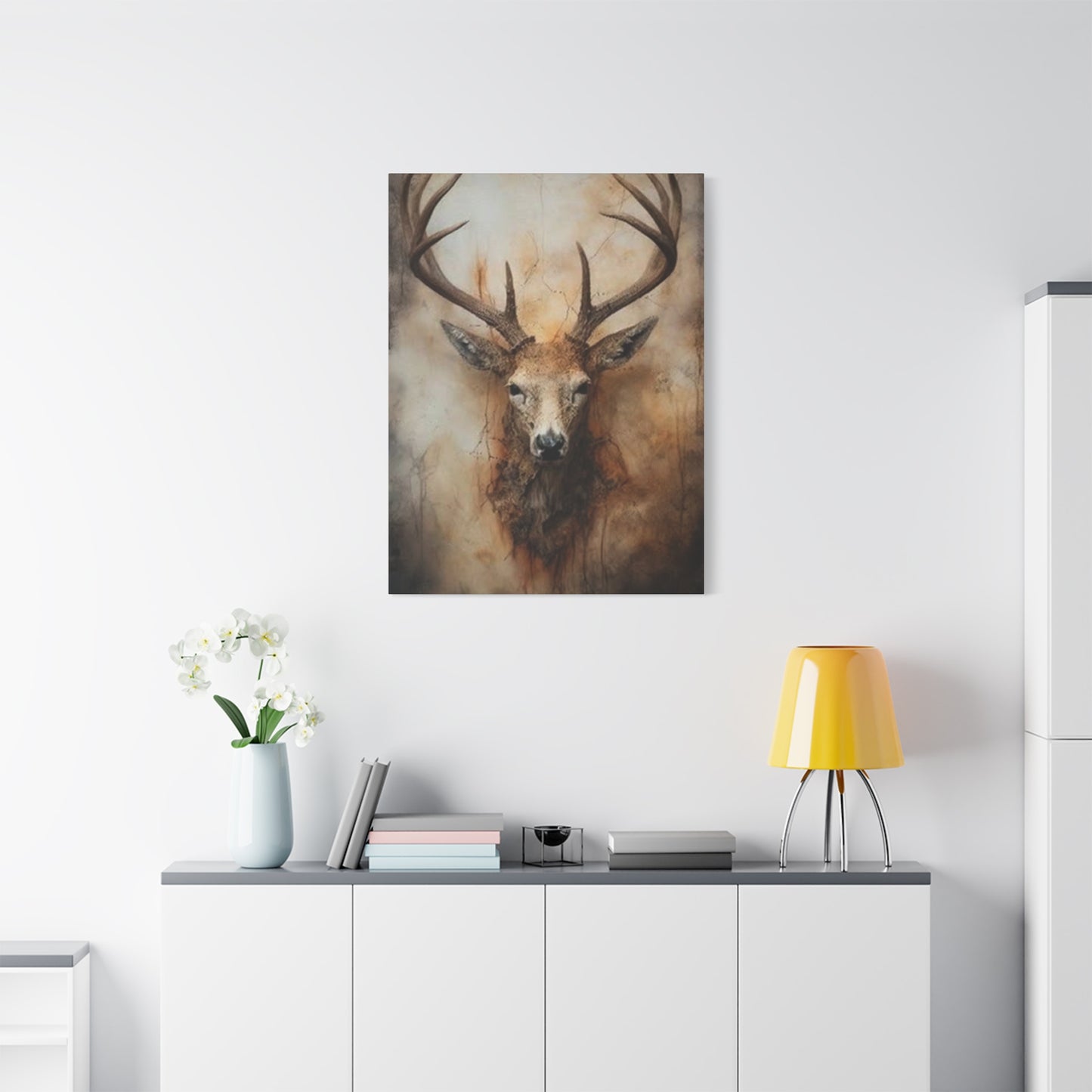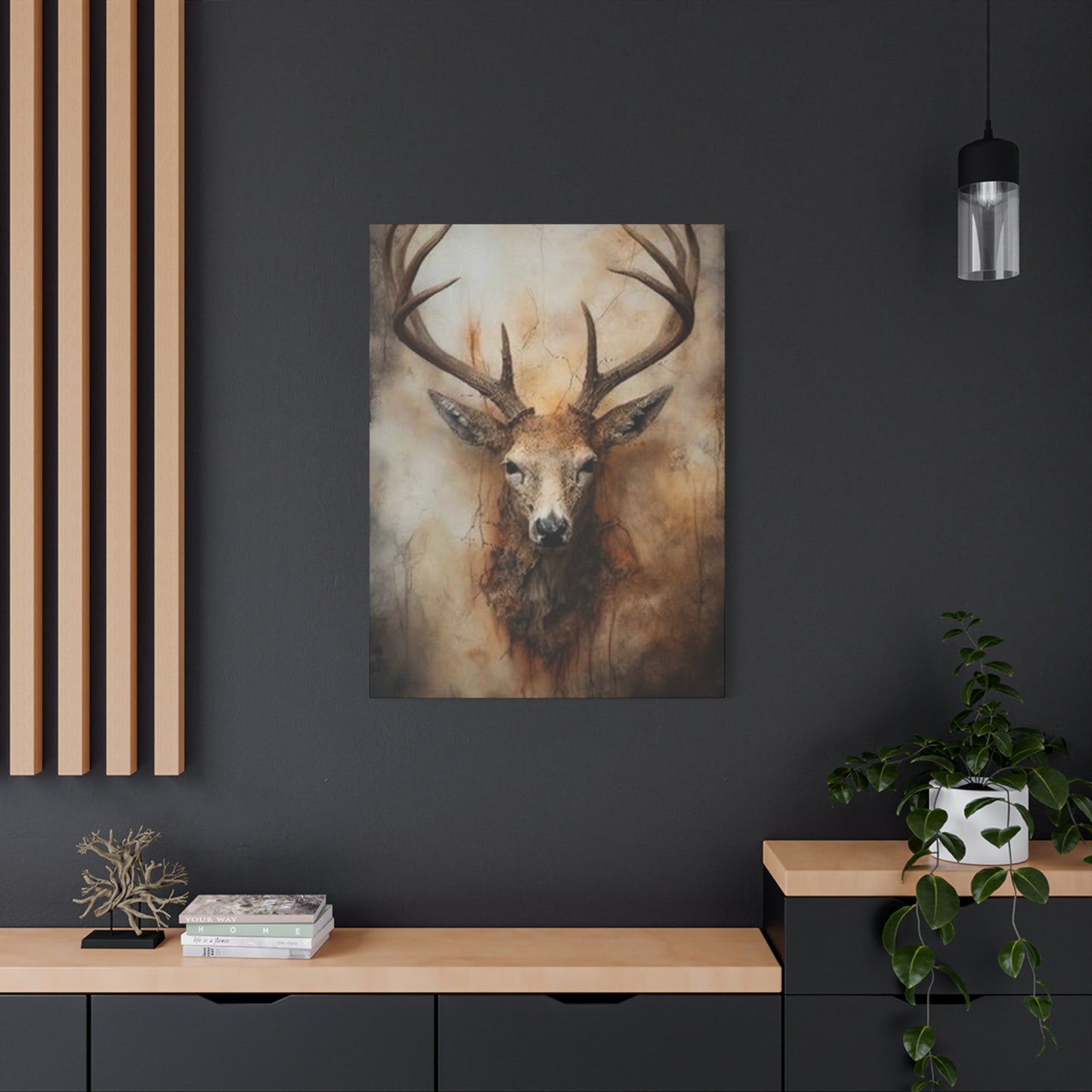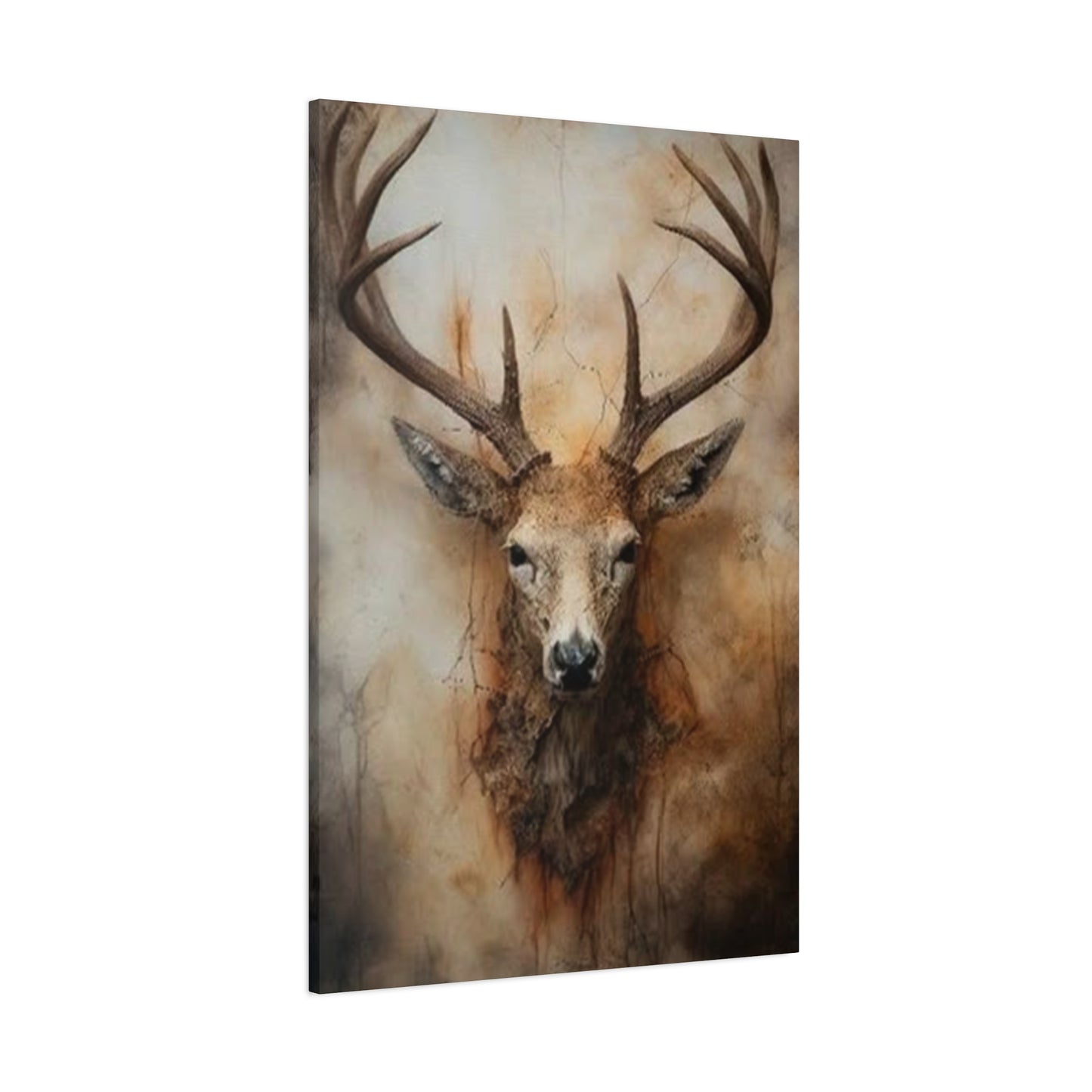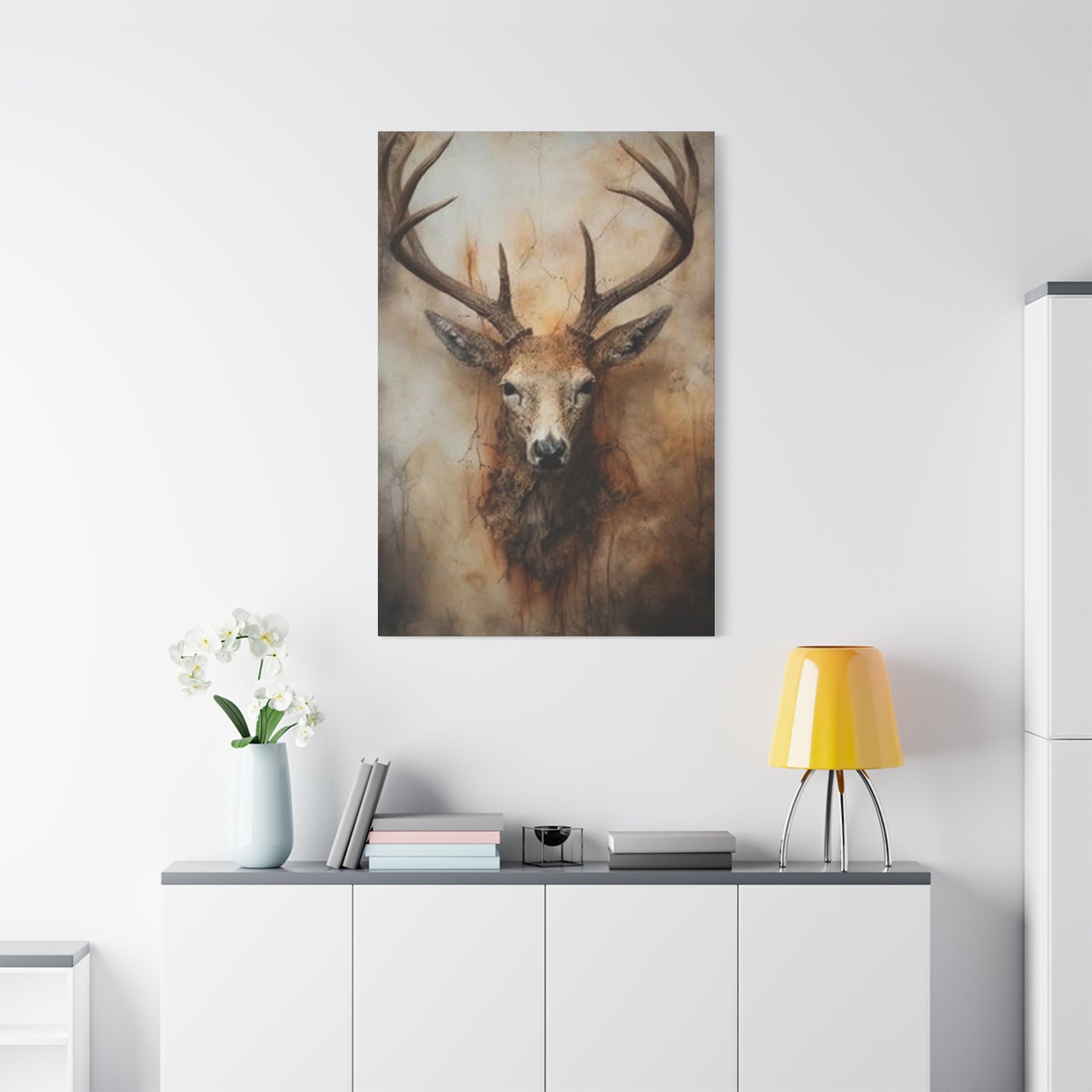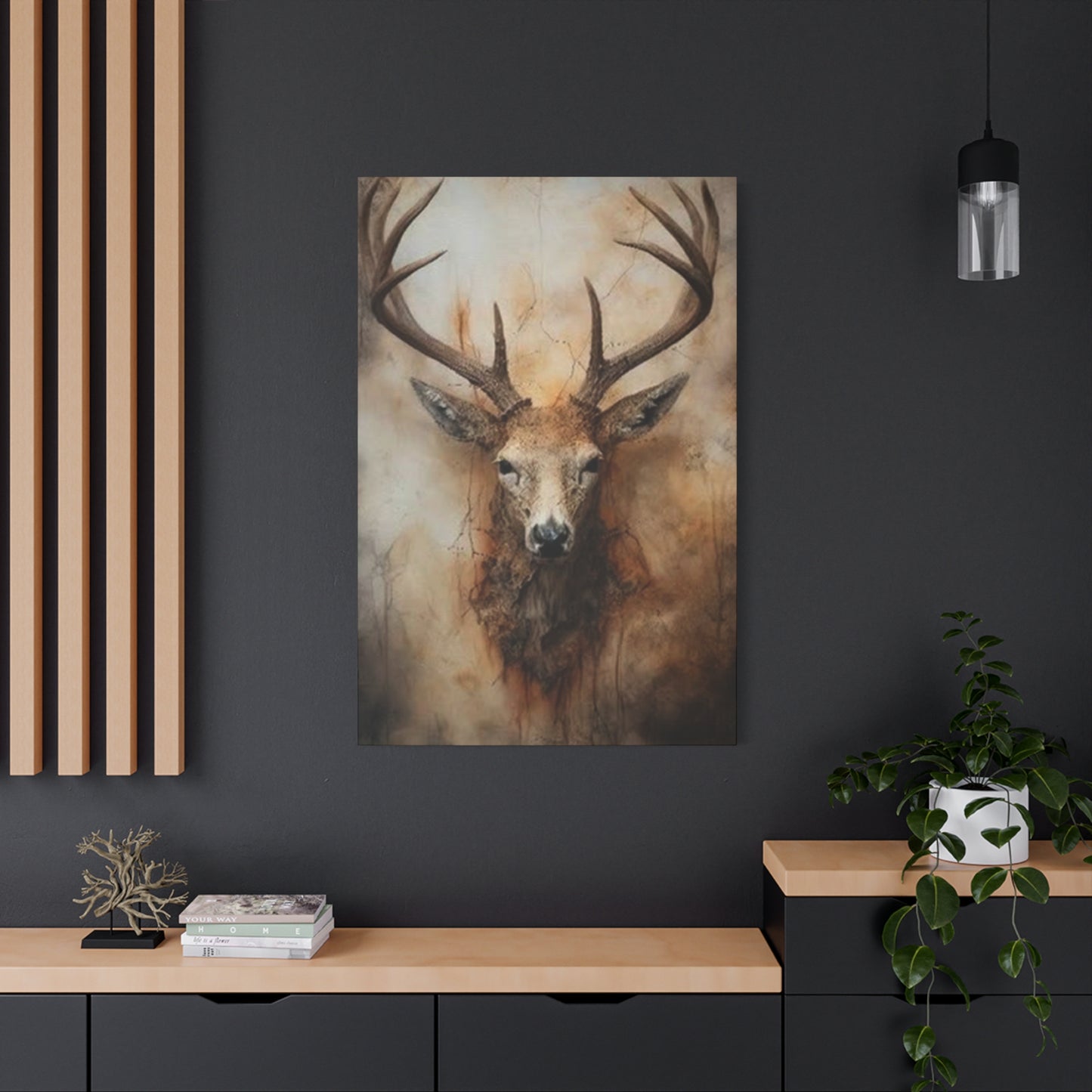The Ultimate Guide to Transforming Your Space with Reindeer Head Painting Wall Art
The world of interior design constantly evolves, embracing elements from nature that bring authenticity and character into our living spaces. Among the most captivating trends emerging in contemporary home décor is the incorporation of wildlife-inspired artwork that celebrates the raw beauty of untamed creatures. This comprehensive exploration delves into the enchanting realm of artistic representations featuring one of nature's most graceful animals, examining how these stunning pieces can revolutionize your interior aesthetic while infusing your environment with warmth, elegance, and a profound connection to the natural world.
In recent years, homeowners and design enthusiasts have increasingly gravitated toward artwork that bridges the gap between modern sophistication and organic authenticity. The artistic portrayal of these magnificent northern creatures offers an exceptional opportunity to achieve this delicate balance, providing visual interest that resonates with both traditional and contemporary sensibilities. Whether you're seeking to create a cozy mountain retreat atmosphere in your urban apartment or enhance the rustic charm of your countryside cottage, these artistic pieces serve as powerful focal points that command attention while maintaining an inviting warmth.
Regal Representations: The Magnificence of Crowned Antler Artwork
The portrayal of these noble creatures with their distinctive crowned features represents one of the most striking forms of wildlife artwork available to discerning collectors and design enthusiasts. These artistic interpretations capture the inherent dignity and powerful presence of these northern animals, transforming them into statement pieces that elevate any interior space. The sculptural quality of their impressive antlers creates dramatic silhouettes that draw the eye upward, adding vertical interest to room compositions while establishing a sense of grandeur that few other decorative elements can achieve.
Artists who specialize in these representations often employ various techniques to emphasize the majestic qualities of their subjects. From hyperrealistic renderings that showcase every textured detail of fur and antler to more abstract interpretations that capture the essential spirit and form, the range of artistic approaches ensures that every aesthetic preference can be accommodated. The inherent symmetry of these creatures provides a natural focal point that brings balance to wall arrangements, making them ideal centerpieces for living rooms, dining areas, or spacious entryways where their full impact can be appreciated.
The timeless appeal of these crowned representations lies in their ability to convey both strength and gentleness simultaneously. The powerful antlers suggest resilience and natural authority, while the gentle eyes and elegant facial features communicate a peaceful nobility that resonates with viewers on an emotional level. This duality makes these pieces particularly versatile, allowing them to complement both masculine and feminine design schemes without overwhelming either aesthetic. The sculptural nature of the antlers also creates fascinating shadow play when properly lit, adding an additional dimension to the artwork that changes throughout the day as natural light shifts across the space.
When selecting pieces that emphasize these crowned features, consider the overall scale of your room and the viewing distance from which the artwork will typically be observed. Larger spaces with high ceilings can accommodate oversized representations that make bold statements, while more intimate rooms benefit from moderately sized pieces that provide visual interest without dominating the environment. The orientation of the antlers within the composition also affects the piece's visual impact, with forward-facing perspectives creating direct engagement with viewers and profile views offering a more contemplative, serene presence.
Untamed Sophistication: Wildlife Elegance in Artistic Portraits
The intersection of wild authenticity and refined elegance creates a fascinating artistic territory where these northern creatures are portrayed with sophisticated artistic sensibility while maintaining their essential untamed character. These portraits achieve a delicate balance between celebrating the raw beauty of wilderness inhabitants and presenting them through a lens of cultured refinement that makes them appropriate for even the most polished interior settings. This approach to wildlife portrayal has gained significant traction among design professionals who seek to incorporate natural elements without sacrificing the sophisticated atmosphere their clients desire.
Artistic portraits that emphasize this duality often employ techniques borrowed from classical portraiture traditions, treating these animal subjects with the same reverence and attention to detail that might be applied to human subjects of distinction. Careful attention to lighting creates depth and dimension, highlighting the noble bone structure and the intelligent expression captured in the eyes. The positioning and framing of these portraits frequently echo compositional strategies used in royal portraiture, with the subject positioned to command respect while maintaining an approachable demeanor that invites contemplation rather than intimidation.
The color palettes employed in these elegant portrayals typically favor sophisticated neutral tones accented with subtle variations that create visual richness without overwhelming the composition. Soft grays, warm taupes, creamy whites, and deep charcoals dominate these works, occasionally punctuated by the warm amber tones of antlers or the deep pools of expressive eyes. This restrained color approach ensures that these pieces integrate seamlessly with a wide range of interior color schemes while providing enough visual interest to justify their position as focal points within a room.
Contemporary interpretations of wildlife elegance have also begun incorporating unexpected artistic elements that enhance their sophisticated appeal. Subtle geometric patterns might overlay portions of the composition, or portions of the subject might dissolve into abstract brushwork that suggests movement or ethereal quality. These artistic interventions transform straightforward wildlife portraits into conversation pieces that reward extended viewing, revealing new details and artistic choices that weren't immediately apparent at first glance. The tension between realistic representation and artistic interpretation creates a dynamic viewing experience that keeps these pieces from becoming mere decorative background elements.
The emotional resonance of these elegant portraits extends beyond their visual appeal, tapping into our collective fascination with creatures that inhabit environments most of us rarely experience firsthand. They represent freedom, resilience, and adaptation to challenging conditions, qualities that many find inspiring and aspirational. By bringing these representations into our daily living spaces, we create subtle reminders of these values, infusing our environments with meaning that extends beyond simple aesthetic pleasure. This deeper connection between viewer and subject distinguishes truly impactful artwork from merely decorative pieces.
Northern Aesthetics: Arctic-Inspired Head Ornamentation
The design traditions of northern regions have long celebrated the beauty of local wildlife, incorporating these creatures into cultural expressions ranging from folk art to contemporary design. This rich heritage informs modern interpretations that bring authentic northern character into contemporary interiors, creating spaces that feel both globally aware and personally meaningful. The clean lines, natural materials, and restrained color palettes characteristic of these design traditions provide an ideal framework for showcasing wildlife subjects in ways that feel both fresh and rooted in established aesthetic values.
Artwork drawing from these northern traditions often emphasizes simplified forms and graphic clarity, stripping away unnecessary details to focus on essential shapes and proportions that define these creatures. This reductive approach creates striking visual impact while maintaining the clean, uncluttered aesthetic that defines the best northern-inspired interiors. The emphasis on craftsmanship and quality materials evident in traditional northern design translates into contemporary artwork through careful attention to printing techniques, canvas quality, and frame selection, ensuring that these pieces maintain their visual impact for years to come.
The natural color palette associated with northern landscapes provides rich inspiration for these artistic interpretations. The silvery grays of winter forests, the warm browns of exposed earth, the brilliant white of fresh snow, and the deep blue-black of long winter nights create a sophisticated color story that feels both dramatic and serene. These colors translate beautifully into interior spaces, providing enough contrast to create visual interest while maintaining the calm atmosphere that makes homes feel like sanctuaries from the outside world. The occasional introduction of brighter accent colors inspired by northern lights phenomena adds unexpected vitality to these otherwise restrained palettes.
Traditional northern design also emphasizes the importance of bringing natural light into interior spaces, a practical necessity in regions where winter days are short and precious. Artwork inspired by these traditions often incorporates this awareness, with compositions that seem to glow with inner light even when depicting subjects that inhabit twilight forests. This luminous quality makes these pieces particularly effective in spaces that receive limited natural light, where they can help create a sense of brightness and openness that might otherwise be difficult to achieve. The interplay between light and shadow within these compositions also creates depth that prevents them from appearing flat or static on the wall.
Countryside Character: Rural Beauty in Wildlife Paintings
The romantic appeal of rustic living has captured imaginations for generations, representing an idealized connection to simpler times and more direct relationships with the natural world. Paintings that capture this countryside character bring warmth and authenticity to contemporary interiors, softening the sometimes sterile precision of modern design with organic textures and earthy color palettes. These works celebrate the weathered beauty of rural landscapes and the creatures that inhabit them, presenting wildlife subjects in contexts that emphasize their integration into broader ecosystem narratives rather than isolating them as singular specimens.
Artistic approaches that emphasize rustic beauty often incorporate visible brushwork and textural elements that add tactile dimension to the work. Rather than striving for photographic precision, these paintings embrace the handmade quality that connects viewers to artistic tradition and human craftsmanship. The slightly imperfect, organic nature of brushstrokes creates a warmth that perfectly complements the subjects themselves, both artwork and subject sharing qualities of natural authenticity that feel increasingly precious in our digitally dominated world. This approach also tends to age beautifully, developing character over time rather than appearing dated as more trend-focused styles might.
Color selections in rustic wildlife paintings tend toward earthier tones that reflect the palette of natural landscapes. Rich browns reminiscent of tree bark and forest floors, sage greens echoing lichen and evergreen foliage, warm ochres suggesting autumn grasses, and deep burgundies recalling winter berries create compositions that feel grounded and organic. These colors integrate seamlessly with natural wood furnishings, stone architectural elements, and textile choices featuring natural fibers, making rustic wildlife paintings ideal for homes that emphasize organic materials and traditional craftsmanship. The warmth of these palettes also creates inviting atmospheres that encourage relaxation and contemplation.
The compositional strategies employed in rustic wildlife paintings often place subjects within suggested landscape contexts rather than isolating them against blank backgrounds. Hints of forest environments, glimpses of mountain vistas, or suggestions of meadow settings provide narrative context that enriches the viewing experience. These environmental elements help viewers imagine the broader world these creatures inhabit, creating a more immersive experience than pure portrait approaches allow. However, these contextual elements are typically rendered with restraint, ensuring that they support rather than compete with the primary subject for viewer attention.
Luxurious Accents: Gilded Antlers and Opulent Details
The incorporation of metallic elements into wildlife artwork represents a fascinating fusion of natural subjects with decorative traditions typically associated with formal, luxurious interiors. When executed with restraint and artistic sensitivity, the addition of gold, silver, or copper accents to representations of these northern creatures creates striking visual impact that elevates the work from naturalistic portrayal to refined artistic statement. This approach demonstrates how traditional wildlife subjects can be adapted to suit sophisticated, even glamorous interior styles without losing their essential character or becoming mere decorative kitsch.
The technique of highlighting antlers with metallic finishes has become particularly popular, transforming these natural features into sculptural elements that catch and reflect light throughout the day. Gold leaf or metallic paint applied to antlers creates a luminous quality that draws the eye and emphasizes the impressive structure of these natural crown-like features. This treatment works especially well in interiors that incorporate other metallic elements, creating visual connections between the artwork and decorative objects, light fixtures, or architectural details elsewhere in the space. The warmth of gold tones complements earthy color palettes beautifully, while cooler silver tones suit more contemporary gray-based schemes.
Beyond antler embellishment, some artistic interpretations incorporate metallic elements more extensively throughout the composition, perhaps adding abstract geometric patterns in metallic ink or creating halos of gilded texture around the subject. These approaches push wildlife portraiture into more experimental territory, challenging traditional boundaries between naturalistic representation and decorative art. The resulting pieces appeal to collectors who appreciate wildlife subjects but seek artwork that makes a more distinctive, contemporary statement than strictly realistic approaches allow. These works demonstrate that respect for natural subjects need not preclude artistic innovation and creative interpretation.
The historical precedents for incorporating gold and other precious materials into artwork stretch back centuries, encompassing religious iconography, royal portraiture, and decorative arts traditions from cultures worldwide. Contemporary artists who add metallic elements to wildlife subjects thus connect with this rich artistic heritage while applying it to subjects that might initially seem incongruous with such formal treatment. This juxtaposition between the wild and the refined creates productive tension that keeps these works visually interesting and conceptually engaging. The suggestion that wildlife subjects deserve the same reverent treatment historically reserved for divine or royal subjects also makes a subtle statement about the value and dignity of the natural world.
Contemporary Countryside: Modern Interpretations of Rural Aesthetics
The evolution of rustic design aesthetics has produced a sophisticated contemporary style that honors traditional country character while eliminating the dated or overly literal elements that can make spaces feel like theme park recreations rather than authentic living environments. Modern rustic interiors balance natural materials and organic forms with clean lines and edited restraint, creating spaces that feel grounded and warm without appearing cluttered or nostalgic. Wildlife artwork that embodies this evolved aesthetic plays a crucial role in defining the overall atmosphere, providing focal points that clearly communicate the design intention while offering sufficient visual interest to prevent spaces from feeling sparse or unfinished.
Contemporary rustic artwork distinguishes itself from more traditional approaches through simplified compositions, edited color palettes, and frequent incorporation of abstract or graphic elements alongside realistic representation. Rather than detailed environmental contexts and exhaustive rendering of every textural detail, these pieces might isolate subjects against minimal backgrounds or use selective focus to emphasize particular features while allowing other elements to dissolve into soft abstraction. This edited approach creates visual impact through strategic emphasis rather than comprehensive detail, aligning with broader contemporary design preferences for clarity and intentionality over abundance and accumulation.
The color strategies employed in modern rustic wildlife artwork tend toward sophisticated neutrals with carefully chosen accent colors that create focal points without overwhelming the composition. Charcoal and warm grays provide depth and dimension, while creamy whites and soft beiges keep the overall feeling light and airy. When additional colors appear, they are typically muted or earthy versions rather than saturated hues, maintaining the restrained sophistication that defines contemporary aesthetics. This approach ensures that the artwork integrates smoothly with modern furniture and architectural elements while still providing the warmth and organic quality that makes rustic influences appealing.
Canvas Creations: Fabric-Based Art for Comfortable Living Spaces
The choice of canvas as a medium for wildlife artwork carries both practical and aesthetic implications that make it particularly suitable for creating inviting, livable interiors. Unlike glossy prints or artwork behind glass, canvas surfaces have a tactile, matte quality that feels organic and unpretentious. The slight texture inherent in canvas weave adds subtle visual interest that prevents the flat appearance that can affect overly smooth print surfaces. This textural dimension becomes particularly apparent when viewing the artwork at varying angles and in changing light, as the weave creates micro-shadows that add depth and life to the image. For spaces intended to feel comfortable and approachable rather than formal or museum-like, canvas presents an ideal medium.
Gallery-wrapped canvas, where the printed image continues around the edges of the stretcher frame, has become increasingly popular for its clean, contemporary appearance that eliminates the need for traditional frames. This presentation style works particularly well with the wildlife subjects under discussion, as the lack of framing allows the creatures to feel less contained and more present within the space. The dimensional quality of stretched canvas also creates subtle shadow lines against the wall that add architectural interest, making the artwork itself a three-dimensional object rather than merely a flat image. This sculptural quality becomes especially apparent when multiple canvases are arranged together to create larger installations.
The durability of properly produced canvas artwork makes it practical for high-traffic areas and households with children or pets, where more delicate framing options might be problematic. Quality canvas prints resist fading when produced with archival inks and can be gently cleaned if necessary, maintaining their appearance for years with minimal maintenance. The absence of glass also eliminates concerns about glare, reflections, or the potential for breakage that comes with framed works. These practical considerations make canvas an excellent choice for family living areas, busy kitchens, or casual spaces where artwork needs to be resilient as well as beautiful.
Contemporary printing technology allows for canvas reproduction at virtually any scale, from intimate pieces suitable for small wall sections to dramatic oversized works that dominate entire walls. This flexibility makes canvas ideal for solving specific design challenges, whether filling an awkward narrow space beside a doorway or creating a commanding focal point above a substantial piece of furniture. Multi-panel canvas installations, often called triptychs or polyptychs depending on the number of panels, can be configured to fit particular wall dimensions while creating the impression of a larger, more significant artistic statement than a single canvas might achieve.
Natural Grace: Capturing Wildlife Elegance Through Artistic Vision
The ability to capture the inherent grace of wild creatures through artistic representation requires not only technical skill but also deep observation and genuine appreciation for the subjects being portrayed. The best wildlife artwork transcends mere documentation, revealing something essential about the character and spirit of its subjects that touches viewers emotionally and creates lasting impact. With the northern creatures featured in this artwork tradition, grace manifests in the elegant economy of their movements, the alert intelligence visible in their eyes, and the perfectly adapted proportions that allow them to thrive in demanding environments. Artists who successfully capture these qualities create work that resonates with viewers on a level beyond simple visual pleasure.
The concept of grace in wildlife portraiture involves multiple dimensions, from the physical elegance of form and movement to the behavioral grace of creatures perfectly adapted to their ecological niches. A truly graceful representation balances anatomical accuracy with artistic interpretation, presenting subjects that feel both authentic and somehow idealized, capturing them at their finest rather than in awkward or unflattering moments. This requires artists to develop deep familiarity with their subjects, understanding not just static appearance but characteristic behaviors, typical postures, and the specific qualities that define these creatures as distinct from related species.
Light plays a crucial role in conveying grace within wildlife artwork, with thoughtful lighting choices emphasizing elegant contours and creating dimensional forms that appear to inhabit real space rather than existing as flat images. Subtle gradations of tone sculpt features and suggest the softness of fur or the smooth hardness of antlers, while strategic highlights draw attention to expressive eyes or the powerful curve of a neck. Artists working in various media approach lighting differently, from the soft, diffused quality that characterizes some painted works to the more dramatic chiaroscuro effects possible in photographic or digitally created pieces, but the underlying principle remains constant: light reveals form and creates mood.
The posture and attitude of subjects dramatically affect the overall impression of grace within wildlife artwork. A head held high suggests confidence and alertness, while a slightly turned stance creates dynamic interest and suggests movement even in a static image. The position of ears, the direction of gaze, and the set of the shoulders all communicate specific information about the subject's state of mind and relationship to its environment. Artists attuned to these subtleties can manipulate them to create specific emotional resonances, from peaceful contemplation to alert watchfulness, each producing different effects on viewers and suiting different interior atmospheres.
Natural Grandeur: Monumental Beauty on Display
The concept of majesty in wildlife representation extends beyond simple size or scale to encompass a quality of presence that commands respect and attention. When applied to these northern creatures, majesty emerges from the combination of physical impressiveness, particularly the sculptural antlers, with an air of calm dignity that suggests inner strength rather than aggressive dominance. Artwork that successfully captures this majestic quality creates powerful focal points that anchor interior designs and provide a sense of gravitas that can elevate the perceived importance of entire rooms.
The portrayal of majesty requires careful attention to proportion and perspective, with artists making conscious choices about viewing angles and subject positioning that emphasize impressive physical attributes while maintaining natural grace. Low viewing angles that place the viewer slightly below the subject's eye level can enhance the sense of monumentality, making even moderately sized artwork feel more commanding. The extension and positioning of antlers within the composition significantly affects the overall impression of majesty, with forward-reaching or upward-sweeping configurations creating more dramatic impact than antlers positioned flat against the picture plane or directed backward.
Background treatments in majestic wildlife artwork typically remain minimal or abstract, preventing environmental details from competing with the subject for visual dominance. Solid or subtly textured backgrounds in neutral tones focus all attention on the creature itself, allowing its form and bearing to create the entire visual impact. When atmospheric effects are incorporated, they typically remain suggestive rather than literal, perhaps implying mist, falling snow, or filtered forest light without rendering these elements with such specificity that they begin drawing attention away from the primary subject. This restraint in background treatment aligns with classical approaches to important portraiture, where the subject's presence justifies the artwork's existence without requiring narrative context or environmental grounding.
The scale at which majestic wildlife artwork is displayed significantly affects its impact, with larger presentations generally more successful at conveying the impressive physical presence of these substantial creatures. A piece measuring several feet across can approach life-size proportions for head-and-shoulder portraits, creating an almost confrontational immediacy that makes the artwork impossible to ignore. However, scale alone does not guarantee majestic impact, as poorly composed or weakly executed large works often fail where smaller pieces with stronger artistic vision succeed. The goal is to match the ambition of the subject matter with presentation that honors rather than diminishes that inherent grandeur.
Cold Season Aesthetics: Frost-Inspired Creative Designs
The visual poetry of winter landscapes has inspired artists for centuries, offering a distinctive palette and atmospheric quality that creates powerful emotional resonance. Wildlife artwork that draws inspiration from frozen season aesthetics brings this evocative character into interior spaces, offering year-round access to the serene beauty of snow-covered forests and crystalline winter light. These pieces carry particular power in regions where actual winters are mild or nonexistent, allowing residents to experience seasonal aesthetics that climate denies them, while in genuinely cold areas they celebrate and elevate the beauty of local seasonal reality.
The color relationships within winter-inspired artwork differ markedly from other seasonal palettes, dominated by various whites, silvers, and pale blues that suggest snow, ice, and cold clear skies. These cool foundations are typically accented with warmer tones representing the subject itself, creating pleasant contrast that prevents the overall composition from feeling too cold or uninviting. The fur tones of northern creatures range from silver-gray to rich brown, providing warm counterpoints to frozen backgrounds while maintaining enough tonal similarity to feel naturally integrated rather than uncomfortably contrasting. Small touches of deeper color, perhaps in the eyes or nose, provide focal points that draw viewers into the composition and create human connection with the animal subject.
Atmospheric effects characteristic of winter conditions offer artists rich opportunities for creating mood and visual interest within their compositions. Falling snow rendered with varying degrees of focus can create depth and movement, suggesting the three-dimensional space the subject inhabits. Frost effects crystallizing along antlers or dusting across the creature's back demonstrate environmental integration while adding delicate textural details that reward close viewing. Mist and fog effects soften backgrounds and create ethereal qualities that enhance the dreamlike atmosphere many viewers associate with pristine winter landscapes. These atmospheric treatments transform straightforward wildlife portraits into evocative scenes that engage imagination and emotional response.
Festival Atmosphere: Seasonal Celebration Through Wildlife Imagery
The cultural associations between these northern creatures and winter holiday traditions create opportunities for artwork that functions both as year-round design elements and as seasonal decoration that enhances festive atmospheres. The challenge lies in selecting or creating pieces that incorporate seasonal spirit without becoming so specifically holiday-themed that they feel inappropriate during other times of year. Successfully navigating this balance results in artwork that brings joy and celebration when holidays arrive while remaining sufficiently sophisticated and artistically sound to justify permanent display.
The most effective approach to creating holiday-appropriate wildlife artwork that transcends pure seasonal decoration involves emphasizing qualities and aesthetics naturally associated with both the subjects and the season without incorporating explicit holiday symbols or references. Winter landscape settings, falling snow, evergreen trees, and cool color palettes all suggest holiday atmospheres without requiring literal sleighs, ornaments, or other specifically festive elements. The creatures themselves carry strong holiday associations for many viewers, making their mere presence sufficient to evoke seasonal feelings without additional symbolic reinforcement. This restrained approach maintains artistic integrity while still delivering desired seasonal resonance.
Color choices significantly affect whether wildlife artwork reads as general winter imagery or specifically holiday-themed. Traditional holiday color combinations like red and green, or gold and silver, immediately signal seasonal intent and may feel too specific for year-round display despite their visual appeal. More subtle approaches might incorporate these colors in muted, sophisticated versions that suggest rather than proclaim holiday spirit. Deep forest green backgrounds, touches of burgundy in atmospheric effects, or antique gold highlighting on antlers can all gesture toward holiday palettes while maintaining enough restraint to avoid feeling like explicit seasonal decoration.
Contemporary Metal Elements: Metallic Accents in Modern Artwork
The incorporation of metallic finishes and materials into wildlife artwork represents one of the more innovative developments in contemporary animal portraiture, pushing traditional naturalistic representation toward more experimental and design-forward territory. These metallic interventions can range from subtle highlighting that adds dimension and visual interest to bold, dominant treatments that fundamentally transform the character of the work. Understanding the various approaches to metallic integration helps in selecting pieces that align with personal aesthetic preferences and existing interior design commitments.
The most conservative application of metallic elements involves using gold, silver, or copper leaf or paint to highlight specific features, most commonly the antlers but occasionally extending to other aspects of the subject or background. This selective emphasis creates focal points that catch light and draw attention, emphasizing the natural crown-like quality of antlers while adding a decorative element that elevates the work beyond pure naturalism. The contrast between matte fur textures and reflective metallic surfaces creates visual interest through juxtaposition, with each material quality enhancing the other through comparison. This approach works particularly well in transitional interiors that blend traditional and contemporary elements, as the metallic treatment signals modern sensibility while the wildlife subject maintains connection to more classical artistic traditions.
More extensive metallic treatments might involve rendering the entire subject in metallic tones, creating images that read almost as sculptures captured in two dimensions. These interpretations sacrifice naturalistic color in favor of uniform metallic finishes that emphasize form, light, and shadow rather than realistic representation. The resulting works often have a luxurious, almost jewelry-like quality that suits formal or glamorous interiors where conventional wildlife artwork might feel too casual or rustic. The monochromatic nature of these metallic renderings also allows them to integrate more easily with diverse color schemes, as they function almost as neutral elements that adapt to surrounding colors rather than introducing additional hues that must be accommodated.
Enduring Attraction: The Timeless Nature of Animal Portraits
Throughout art history, animal subjects have maintained consistent appeal across changing stylistic movements and evolving aesthetic preferences, suggesting something fundamental in human psychology that responds to quality animal portraiture regardless of contemporary trends. Wildlife artwork featuring these northern creatures participates in this timeless tradition, offering subject matter that has proven durability across decades and even centuries of changing tastes. This enduring quality makes such pieces safer long-term investments than trend-dependent alternatives, as they are less likely to feel dated or require replacement as interior design fashions evolve.
The timelessness of wildlife portraiture derives partly from its connection to subjects that exist outside human cultural systems and fashion cycles. While artistic styles and presentation approaches certainly change, the animals themselves remain constant, their essential character unchanged by the passage of time or shifts in human aesthetic preferences. This grounding in natural reality provides stability that purely abstract or conceptual works may lack, as viewers can always connect with the recognizable subject even if specific artistic choices feel tied to particular historical moments. The combination of timeless subjects with thoughtfully chosen artistic approaches offers the best possibility for creating work that maintains relevance and appeal across extended timeframes.
Classical artistic principles governing composition, light, form, and color provide frameworks that have demonstrated effectiveness across centuries of artistic practice. Wildlife artwork that adheres to these fundamental principles rather than chasing contemporary stylistic trends inherits some of their proven durability. Balanced compositions, harmonious color relationships, skilled rendering of form and texture, and thoughtful use of light and shadow create visual satisfaction that operates independently of fashion, appealing to human perceptual preferences that appear to be fairly consistent across time and culture. While innovation and experimentation certainly have value, pieces intended for long-term living with may benefit from grounding in these tested approaches.
Powerful Symbolism: Antlers as Representations of Inner Strength
The distinctive antler structures that define these northern creatures carry rich symbolic weight that artists can emphasize through compositional choices and artistic treatments. Antlers represent multiple layers of meaning simultaneously, from literal physical strength and defensive capability to more abstract concepts of natural growth, seasonal renewal, and the meeting point between earth and sky. Artwork that thoughtfully engages with this symbolic dimension adds conceptual depth that enriches the viewing experience beyond simple visual pleasure, creating pieces that function as meaningful statements rather than purely decorative elements.
The annual cycle of antler growth and shedding provides powerful metaphors for renewal, transformation, and the possibility of regeneration after loss. Each year these structures grow from nothing into impressive formations before being shed to begin the cycle again. This pattern resonates with human experiences of starting fresh, recovering from setbacks, and finding unexpected strength during difficult periods. Artwork that captures these creatures during active antler-growing periods, with velvet-covered developing antlers, emphasizes this growth and transformation symbolism more explicitly than pieces showing fully developed hardened antlers, though both carry meaningful resonance for viewers attuned to these symbolic dimensions.
The impressive size and complex branching structure of fully developed antlers create visual metaphors for aspiration, reach, and connection. The upward and outward extension suggests striving toward goals, expanding influence, or reaching beyond current limitations. The branching patterns might represent complex thinking, multiple paths or possibilities, or the interconnected nature of experience and relationships. The negative space between antler tines creates interesting shapes that contribute to the overall composition while potentially carrying symbolic weight about the importance of emptiness, space, and what is not present alongside what is. Artists conscious of these symbolic possibilities can compose works that engage with them intentionally, creating layers of meaning that reward contemplation.
Cultural and spiritual traditions from various northern peoples have long associated these antlered creatures with particular qualities, concepts, or spiritual energies. While specific associations vary across different cultural contexts, common themes include endurance, guidance, connection between physical and spiritual realms, and embodiment of wild nature's power and dignity. Contemporary viewers may or may not consciously engage with these traditional symbolic frameworks, but artwork created with awareness of these associations often carries a particular resonance that operates even when viewers cannot articulate its source. This cultural depth adds substance that distinguishes genuinely meaningful work from shallow decoration.
Northern Landscapes: Introducing Arctic Wilderness to Urban Dwellings
The dramatic contrast between urbanized living environments and pristine wilderness landscapes creates psychological tension that many people attempt to resolve through design choices that bring natural elements into their homes. Wildlife artwork featuring creatures from remote northern regions offers particularly effective means of establishing this connection, as these subjects carry strong associations with vast, unspoiled territories that exist far beyond urban boundaries. For city dwellers who may rarely experience genuine wilderness, these artistic windows into wild spaces provide valuable psychological relief and help maintain awareness of the broader natural world beyond immediate urban surroundings.
The specific qualities of northern wilderness landscapes that make them psychologically valuable include their relative emptiness of human presence, dramatic seasonal variations, and the extreme conditions that demand resilience from inhabitants. These characteristics create environments that feel authentically wild in ways that more temperate or accessible landscapes may not, representing nature largely unchanged by human influence. Artwork that successfully evokes these pristine northern territories brings something of their unspoiled character into domestic spaces, creating subtle reminders that wild places still exist despite increasing urbanization and human environmental impact. This awareness can be comforting, inspiring, or challenging depending on viewer perspective and relationship to environmental concerns.
The physical remoteness of northern wilderness regions means that most people will never visit them personally, making artistic representations particularly important as means of accessing these landscapes through imagination and visual experience. Artwork featuring northern creatures serves as proxy for direct wilderness experience, allowing viewers to engage with these environments from comfortable domestic settings. While nothing truly replaces direct experience of wild places, quality artistic interpretation can convey something of their essential character and particular atmospheric qualities, providing genuine if mediated connection to these distant territories. For urban residents with limited opportunity to travel to wilderness areas, such artwork may represent the primary means of maintaining awareness of these places.
The selection of artwork emphasizing wilderness context over isolated subject portraiture creates different viewing experiences with varying psychological effects. Pieces that place subjects within suggested landscape contexts invite viewers to imagine themselves within those environments, potentially triggering relaxation responses associated with nature exposure. Research has demonstrated that even images of natural settings can produce measurable reductions in stress markers, suggesting that wilderness-themed artwork may offer genuine wellbeing benefits beyond aesthetic pleasure. The specific type of landscape depicted affects these responses, with some viewers finding expansive vistas calming while others respond more positively to more enclosed forest settings.
Within urban apartments and homes, wilderness artwork can create productive tension between immediate architectural reality and distant landscape associations, acknowledging the urban context while providing visual escape from its sometimes oppressive density. This tension need not be problematic but can instead generate creative energy that makes living spaces feel more dynamic and psychologically complex. The juxtaposition of sleek contemporary architecture with wild subject matter, or the placement of northern landscape imagery in tropical urban settings, creates interesting cultural and aesthetic dialogues that prevent interiors from feeling monolithic or overly literal in their design narratives. These creative tensions keep spaces feeling alive and intellectually engaging rather than predictable or boring.
Simplified Forms: Minimalist Approaches to Wildlife Wall Imagery
The minimalist design movement's emphasis on essential elements, clean lines, and edited restraint might initially seem incompatible with wildlife subject matter, which could easily trend toward visual complexity and decorative abundance. However, thoughtful approaches to wildlife portraiture can absolutely align with minimalist principles, creating pieces that honor both the subjects and the aesthetic framework within which they're being presented. Minimalist wildlife artwork strips away unnecessary detail and contextual information to focus on core forms and fundamental characteristics that define subjects at their most essential level.
The formal reduction inherent in minimalist approaches requires artists to identify what is truly necessary to convey subject identity and character, eliminating everything else as visual noise. For these northern creatures, essential elements might include the distinctive antler silhouette, the characteristic head and ear shapes, and perhaps the alert, intelligent quality of the eyes. Everything beyond these defining features becomes optional, subject to elimination if it doesn't substantially enhance the work. This ruthless editing results in images that communicate with remarkable efficiency, making immediate impact through clarity rather than accumulation of detail.
Color palettes in minimalist wildlife artwork typically restrict themselves to limited ranges, often working within monochromatic or near-monochromatic frameworks that emphasize value relationships over chromatic variety. This restraint prevents color from becoming distracting and focuses attention on form, composition, and essential character. Black and white interpretations represent the ultimate color restraint, reducing subjects to pure light and shadow relationships that highlight structure and form. Subtle variations within narrow color ranges create sophistication and prevent the flatness that can affect overly simple or graphic treatments. The limited palettes of minimalist wildlife art also ensure easy integration with diverse interior color schemes, as these pieces function almost as neutral elements that complement rather than compete with surrounding colors.
The composition of minimalist wildlife artwork frequently employs substantial negative space, with subjects occupying relatively small portions of the overall canvas and surrounded by expansive emptiness. This generous negative space serves multiple functions: it creates breathing room that prevents visual crowding, it emphasizes the subject through isolation, and it generates a contemplative atmosphere that encourages slow, focused viewing rather than quick scanning. The negative space becomes as important as the subject itself, an active element of the composition rather than merely empty background. This sophisticated use of emptiness aligns with minimalist philosophy that values what is not present as highly as what is included.
The display of minimalist wildlife artwork requires particular attention to maintaining the visual clarity and spatial breathing room that defines the aesthetic. These pieces should not be crowded by surrounding décor or positioned too closely to furniture and architectural elements that might impinge on their visual territory. Clean, simple frames or frameless presentations maintain the minimalist integrity of the work itself, while elaborate frames would contradict the essential restraint of the artistic approach. Gallery walls featuring multiple small pieces generally conflict with minimalist principles, making single statement pieces or carefully balanced pairs more appropriate choices for truly minimalist environments.
Peaceful Presence: Wildlife Imagery That Encourages Calm
The ability of visual environments to influence emotional states and stress levels has been documented extensively through psychological research, with particular attention paid to how nature imagery affects viewer wellbeing. Wildlife artwork featuring calm, contemplative subjects offers particular potential for creating peaceful atmospheres that support relaxation and emotional restoration. The specific qualities that contribute to this calming effect include the subjects' demeanor, compositional balance, soothing color palettes, and the absence of visual tension or conflict within the imagery.
The facial expressions and body language of animal subjects significantly affect the emotional impact of wildlife artwork, with peaceful, relaxed presentations communicating calm that viewers unconsciously mirror through emotional contagion processes. Subjects portrayed with soft, gentle eyes, relaxed ear positions, and unthreatening postures create immediate impressions of safety and tranquility that influence how viewers feel in spaces featuring such imagery. The neurological mechanisms underlying these responses involve mirror neurons and evolutionary adaptations that cause humans to respond to emotional cues from other creatures, even those of different species. Artists conscious of these effects can deliberately compose works that maximize calming influence through careful attention to subject expression and bearing.
Compositional elements that contribute to a peaceful atmosphere include balanced arrangements that avoid tilted horizons or jarring angles, centered or symmetrically positioned subjects that create stability, and gentle curves rather than sharp angles or aggressive diagonals. These formal choices create visual harmony that reads as peaceful and settled rather than dynamic or agitated. The absence of implied movement or frozen action also contributes to tranquil quality, with subjects presented in moments of stillness that encourage viewers to slow down and remain present rather than anticipating what might happen next. This static quality might seem limiting, but for artwork intended to promote calm, the absence of narrative tension serves important psychological functions.
Conclusion
In conclusion, reindeer head painting wall art offers a captivating and versatile way to transform any living or working space into an inviting haven that blends nature’s charm with artistic elegance. This unique form of décor draws on the majestic symbolism of the reindeer—a creature often associated with strength, endurance, and the serene beauty of the wilderness—and translates it into stunning visual art that enhances your environment with both warmth and style.The reindeer head as a subject carries powerful connotations. It evokes images of snowy forests, peaceful winter landscapes, and the quiet majesty of wildlife. When captured through the medium of painting, this imagery takes on new life, inviting viewers to connect with nature and bring a sense of calm and grounding into their homes. Whether rendered in realistic detail, abstract expression, or modern minimalism, reindeer head paintings provide a striking focal point that blends traditional themes with contemporary aesthetics.
One of the greatest advantages of reindeer head painting wall art is its versatility in interior design. It fits effortlessly into various décor styles, including rustic cabins, modern Scandinavian interiors, bohemian retreats, and even eclectic urban apartments. The natural tones often present in these artworks—browns, grays, whites, and muted greens—complement a wide range of color schemes, making it easy to integrate this art into existing spaces. Moreover, the presence of animal-themed art introduces an organic element that softens and humanizes a room, fostering a cozy and welcoming atmosphere.
Beyond aesthetics, reindeer head paintings symbolize more profound themes of resilience, journey, and connection to nature. Reindeer are known for their long migrations and ability to thrive in harsh climates, making them potent symbols of endurance and adaptability. Displaying such artwork in your space serves as a subtle reminder of these qualities, encouraging mindfulness, perseverance, and harmony with the natural world. This emotional resonance adds depth to your décor, making it not just visually appealing but personally meaningful.Artistically, the range of styles available in reindeer head wall art—from hyper-realistic portraits to stylized, graphic interpretations—offers endless opportunities for customization and personal expression. Some pieces feature intricate brushwork and textured details, while others employ bold lines and geometric shapes to create a contemporary vibe. This diversity ensures that there is a perfect piece for every taste and setting, whether you prefer something dramatic and eye-catching or subtle and serene.
In addition, reindeer head paintings often evoke a sense of seasonal charm and celebration, particularly during the winter months and holiday season. Their association with festive imagery makes them popular choices for seasonal décor, bringing a touch of elegance and whimsy to holiday settings. However, their timeless appeal means they can be enjoyed year-round, providing a consistent connection to nature and tradition regardless of the season.Psychologically, incorporating animal-inspired art such as reindeer heads can have a soothing and grounding effect. Nature imagery is known to reduce stress, improve mood, and promote a sense of well-being. By surrounding yourself with such art, you create a sanctuary within your home where you can relax, recharge, and reconnect with the natural world, even in urban environments.

















